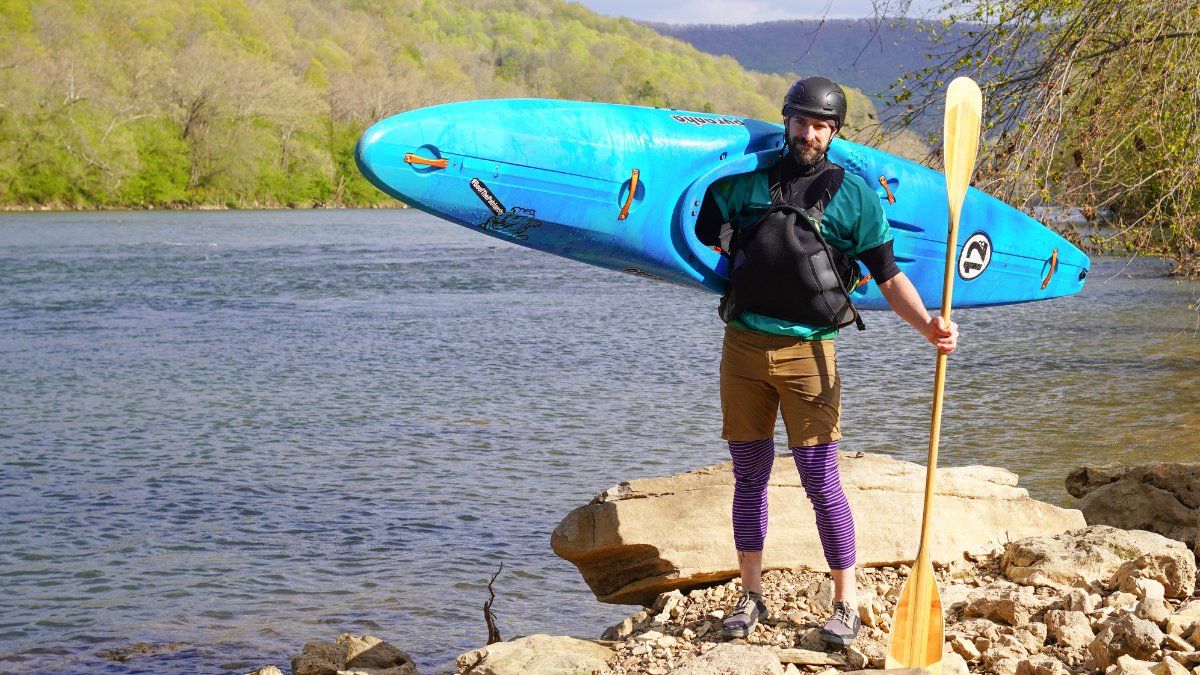This week, we’re airing an encore episode of Inside Appalachia.
We’ll meet a man who makes wooden turkey calls, but these aren’t just any turkey calls. Painter Brian Aliff doesn’t call himself an artist, but he intricately paints his turkey calls, which are now collectors’ items.
We’ll also meet people who make wooden paddles by hand and custom-decorate each one, and a man who repairs cuckoo clocks.
Finally, we’ll travel to some of the most beautiful spots in Appalachia to find wildflowers, like Dolly Sods and the Canaan Valley of West Virginia. And we wonder — are these areas becoming too popular?
These stories and more this week, Inside Appalachia.
In This Episode:
- Welder Keeps Old Clocks Ticking
- Navigating Wood, Whitewater And The Art of Paddle Making
- Appalachian Artist Blends Sight And Sound To Create Award-Winning Turkey Calls
- Sustainably Harvesting Ramps Also Supports Clay County Community
Welder Keeps Old Clocks Ticking
When you need to check the time, where do you look? Most people turn to their phones or digital watches. These days, it seems like every electronic device has a clock function in addition to whatever it’s supposed to do, but it hasn’t always been this way. Not all that long ago, marking the passage of time was the job of one device — a clock.
Folkways Reporter Zack Harold spent some time with Carl Witt, a man in Fairview, West Virginia, who learned how to repair clocks after crossing paths with the late Charles Decker. Witt, a welder at the time, decided to retire and went on to start his own clock repair business — Curiosity Clockworks.
Dolly Sods Hosts Wildflower Pilgrimage
Dolly Sods is federally protected public land — full of rocky ridges, soggy bogs and beautiful views. It’s also the site of an annual nature walk called the West Virginia Wildflower Pilgrimage. The event attracts wildflower and birding experts from around the country and was most recently held in May of this year.
Inside Appalachia Host Mason Adams made the pilgrimage in 2021 from his home in Floyd County, Virginia to Dolly Sods in West Virginia’s Canaan Valley.
Paddlers Design Their Own Gear
Appalachia has several huge rivers: the Gauley, the Youghiogheny and the New River, just to name a few. Whitewater paddling is popular in the region, but it wasn’t that long ago modern paddlers first started exploring these rivers, designing their own gear and even building their own paddles. Some of those DIY paddle makers are now master crafters and their work is in high demand.
As part of our Inside Appalachia Folkways Project, Clara Haizlett learned more.
Handmade Turkey Calls
Like many Appalachian traditions, turkey calls go way back. Historically, they’ve been used as a hunting tool, but one West Virginia artist has taken it to the next level. Brian Aliff makes hand-crafted, prize-winning decorative turkey calls. These pieces are functional and they’re becoming collector’s items, but it took a while for Aliff to think of himself as an artist.
Folkways Reporter Connie Kitts talks with Aliff on this week’s episode.
Increase In Tourism Puts Strain On Local Infrastructure
Tucker County, West Virginia, has seen a surge of new visitors from Washington, D.C. in the years since US Route 48, also known as Corridor H, opened. The growing number of visitors is good for business, but it’s also straining the resources of a county with just one stoplight and 7,000 year-round residents.
Mason Adams visited the towns of Thomas and Davis in Tucker County, West Virginia and has this story about managing growth and resources against the backdrop of expansive natural beauty.
——
Our theme music is by Matt Jackfert. Other music this week was provided by Dinosaur Burps, The Chamber Brothers, and Wes Swing. Bill Lynch is our producer, but Roxy Todd originally produced this episode.
Our executive producer is Eric Douglas. Kelley Libby is our editor. Our audio mixer is Patrick Stephens. Zander Aloi also helped produce this episode.
You can send us an email: InsideAppalachia@wvpublic.org.
You can find us on Instagram, Threads and Twitter @InAppalachia. Or here on Facebook.
Sign-up for the Inside Appalachia Newsletter!
Inside Appalachia is a production of West Virginia Public Broadcasting.
